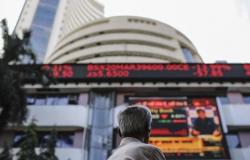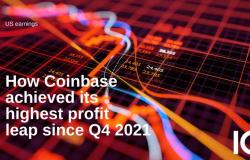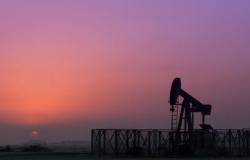The Government defined what the next increases that will arrive from April in public services of gas, electricity, water and transportation. In recent weeks there was a partial change of direction in which the increases were sought to be concentrated on high-income residential users, businesses and industries. Meanwhile, the middle and low income segments will have smaller increases under the premise of not deepening the impact of the adjustment in these sectors.
Gas
The Secretary of Energy published its estimate of what will be the impact on final natural gas bills for networks of the increase that it defined starting in May for the price of Point of Entry to the Transportation System (PIST).
The greatest effect of the increase will be felt by residential users known as N1 (high income) and productive sectors (commerce and industries) in three parts throughout 2024: from April 1 to 30; from May 1 to September 30, and from October 1 to December 31 of the current year.
Currently, not all users pay the same for the cost of energy in their bills, which is where the subsidies are granted. The current subsidy scheme marks three universes: high income (N1), low income (N2) and middle income (N3) determined by the Total Basic Basket (CBT) of the Indec.
On average, the jump is (214%) from one month to the next: the PIST gas consumption value will go from $2,073.7 (March/24) to $6,505.3 (as of April/24):
- N1 will go from $2,961.3 to $9,270.5. (213%)
- N2 will go from $838.0 to $2,462.2. (193%)
- N3 will go from $1,975.1 to $6,375.3.(222%)
On this basis, the Enargas will define the new tariff tables with the transportation and distribution values. The official intention is that these will be published in the next few hours. Therefore, invoices could jump in some cases above 300 percent.
Electricity
The increases in the wholesale price, transportation and distribution arrived in February and were paid with the March bills. In April, the monthly indexation based on inflation that Energy determined for the cost of distribution and transportation will take place.
According to the latest report from the consulting firm Economy & Energy “average monthly bills increase by 183% for high-income residential users (from $10,467 to $29,637), while for low-income users it is 185% ($3,970 to $11,313) and for middle-income users it is 177% % ($5,518 to $15,260)”they stated.
Residential users classified as high-income, businesses, industries, public buildings and universities, among others, could soon receive a new increase in their electricity bills that will be added to the one applied in February. Thus, this group will pay 100% more only for the concept of the cost of electricity in their final bills for the May-July quarter.
A report of the Interdisciplinary Institute of Political Economy (IIEP) of UBA-Conicet He explained that in the AMBA a small business With a contracted power of 10 kW and a consumption of 1,200 kwh/month, he went from paying an electricity bill of $64,775 in January to $266,213 in February including taxes, which are the ones that began to arrive in March (316%).
On the other hand, they highlighted, a small industry With a contracted power of 35 KW and a monthly consumption of 6,500 kwh/month, he went from paying a bill of $274,875 in January to $1,060,187 in February. This is an increase of 286% month over month.
Water
The company Argentine Water and Sanitation (AySA) This Wednesday he ratified his request to the Government to apply an increase of 209% in their rates starting in April corresponding to their drinking water and sewage services.
The company reported that the average wage without taxes will go from $5,290 to $16,300 per month, and will represent approximately 2.8% of the average salary of stable registered workers in January ($555,269). The meter request will be free.
AySA’s increase request implies that some 534,517 residential users in the Autonomous City of Buenos Aires and Greater Buenos Aires at the high zonal level would go from paying $6,236 on average to $19,269 for water and sewer service in March. All rates are calculated without taxes.
The 5,991 homes that only have water service and not sewage, which belong to gated communities, will go from $9,962 to $30,784 from one month to the next.
For their part, the 996,718 residential users at the medium zone level will go from paying $5,663 in March to $17,599 in April, always without taxes. The 5,827 homes with only water service will receive a jump from $3,263 to $10,082 per month.
For the 1,187,139 million households categorized as low zone level, increases will arrive that will take their rate from $4,551 to $14,062 starting in April for water and sewer. There are 582,044 users who only have water service, for which the jump will be from $1,735 to $5,360.
Residential residents will not be the only ones that will pay more for AySA services starting next month, since industries, businesses, buildings, hospitals, schools and municipalities will also feel the impact.
The 303,636 non-residential users with water and sewer service will go from a bill of $23,102 to $71,386 without taxes. In that same sense, the 30,595 who do not have sewers will see a jump in their bills from $13,917 in March to $43,002 in April.
Trains and buses
From April some passengers will pay more for tickets train and bus tickets in the AMBA. Although it was planned that the bimonthly inflation update formula would be applied for all urban transport, ultimately only users who have not registered the SUBE card in their name will have increases.
The minimum bus ticket for these passengers will jump 60% from $270 to $430 while the first section of trains will double, from $130 to 260 pesos.
In any case, the possibility of carrying out the “nominalization” of the plastic will remain open. In total, this procedure has already been carried out by more than 2 million people, according to official data, which is why the average registration was multiplied by 10 times compared to the previous regulations.






